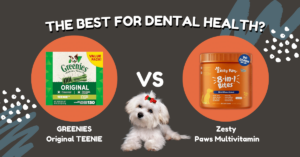For individuals who own dogs, their furry companions are not just pets but cherished family members. That’s why ensuring your beloved pooch receives nutrition and care is crucial. Like humans, dogs can develop food allergies, leading to symptoms like itchiness, vomiting, and stomach troubles. To keep your dog healthy while managing their allergies, incorporating treats into their diet can be beneficial. In this blog post, we will explore what hypoallergenic dog treats are and how they can help. Additionally, we’ll provide some tips on choosing the treats tailored to your pet’s unique needs.
What exactly are hypoallergenic dog treats?
Hypoallergenic dog treats are crafted for dogs with allergies, sensitivities, or dietary restrictions. These treats utilize selected ingredients in quantities to minimize the risk of triggering allergic reactions or gastrointestinal problems in dogs prone to allergies. Let’s delve into details about hypoallergenic dog treats;
Key features of Hypoallergenic Dog Treats;
Limited Ingredients: Hypoallergenic treats have a list of ingredients to reduce the presence of potential allergens. They often contain a protein source along with simple and easily digestible components.
Avoiding Common Allergens: Hypoallergenic treats are crafted to avoid allergens, like beef, chicken, wheat, soy and dairy. These ingredients have been known to trigger allergies in dogs.
Natural and Top Quality Ingredients: When it comes to treats, quality is critical. They typically contain wholesome ingredients that are less likely to cause adverse reactions.
Grain-Free Choices: Many hypoallergenic treats are free from grains such as wheat and corn, as these can be allergenic for some dogs. Instead, they may include carbohydrate sources like potatoes or peas.
No Artificial Additives: Hypoallergenic treats often exclude colors, flavors, preservatives, and additives that could potentially contribute to allergies.
Unique Protein Sources: To minimize the risk of reactions, some hypoallergenic treats make use of protein sources like duck, venison, rabbit, or fish – options that are not commonly found in regular dog treats.
Limited Use of Fillers: These treats strive to minimize the inclusion of filler ingredients while focusing on providing value without compromising taste.
Benefits of Hypoallergenic Dog Treats:
Managing Allergies: Hypoallergenic treats are specifically formulated to reduce exposure to allergens. This makes them suitable for dogs with food allergies or sensitivities.
Addressing Gastrointestinal Sensitivities: Dogs with stomachs or gastrointestinal issues may find relief through treats containing easily digestible ingredients.Taking Care of Your Dog Skin;
To maintain your dog’s skin health, you can consider using treats. These treats are designed to avoid allergens that can worsen skin issues in dogs with allergies.
Managing Weight: If your dog is on a weight management plan, hypoallergenic treats with ingredients can be a choice. They often have calories compared to treats.
Effective Training Rewards:
You can still use treats as training rewards for your dog. They provide reinforcement without triggering any reactions.
Selecting Hypoallergenic Dog Treats;
Consult Your Veterinarian: Before introducing treats into your dog’s diet, consult with your veterinarian if your dog has allergies or sensitivities.
Read Ingredient Labels: Read the ingredient list of the treats to ensure they align with your dog’s needs.
Single Protein Source: Opt for treats that contain one protein source. This helps in identifying and managing allergies effectively.
Natural Ingredients: Look for treats that have natural ingredients while avoiding additives.
Monitor Your Dog Reaction: After introducing a treat, observe your dog for any signs of allergies, digestive issues or adverse reactions.
Remember that every dog has allergies and sensitivities. Finding the hypoallergenic treatment may require some trial and error. Always prioritize the health and well-being of your friend when selecting their treats.
Tips
Tips for selecting the treats for your beloved furry companion require careful consideration of their dietary requirements, sensitivities, and personal preferences. Here are some valuable pointers to help you make a decision;
1. Seek Expert Advice;
Before introducing any treats into your dog’s diet, especially if they have allergies or sensitivities, it is advisable to consult with a veterinarian. They can offer insights. Recommend suitable treatment options based on your dog’s health needs and dietary considerations.
2. Identify Potential Allergens;
Be aware of the ingredients that could trigger reactions or sensitivities in your dog. Common allergens include beef, chicken, wheat, soy, dairy products, and certain grains. Look for treats that are formulated without these ingredients.
3. Opt for Simplicity;
Choose treats with a transparent ingredient list. Ideally, they should consist of several natural components that are unlikely to cause any adverse reactions.
4. Explore Unconventional Protein Sources;
Consider selecting treats containing protein sources your dog hasn’t been exposed to. Options like duck, venison, rabbit or fish can be less likely to induce responses in dogs.
5. Grain Free Options;
You may consider grain-free treats, especially if your dog is sensitive to grains like wheat, corn or soy. Look for alternatives such as potatoes, peas, or lentils.
6. Ingredients;
It’s important to choose treats that are made with quality and natural ingredients. Stay away from treats that contain colors, flavors or preservatives, as they could potentially contribute to allergies.
7. Carefully Read Labels;
Make sure to read the ingredient label of each treat you are considering. It’s crucial to understand each ingredient. Where it comes from.
8. Avoid Fillers;
Opt for treats that prioritize value over fillers. The fewer filler ingredients a treat has, the higher its quality will be.
9. Single Protein Source;
If your dog has allergies, choosing treats with one protein source might be helpful. This can simplify the identification of triggers.
10. Brand Reputation;
Select treats from brands known for their commitment to quality and safety. Look for brands that value transparency. Provide information about their sourcing practices.
11. Observe Your Dogs Reaction;
When introducing a hypoallergenic treat, observe your dog for any signs of reactions, digestive issues, or discomfort.
If your dog experiences any reactions, stop using the treats and consult your veterinarian.
12. Seek Recommendations;
Ask your vet or other dog owners with allergies for suggestions on treats that have proven effective.
13. Consider Texture and Size;
Take into account your dogs preferences. Some dogs prefer crispy treats, while others prefer chewy or soft ones. Also, choose treats suitable for your dog’s breed and size.
14. Variety and Rotation;
Offer a range of treats to keep your dogs diet exciting and minimize the chances of developing allergies. Rotate the treats to reduce the likelihood of sensitivities developing.
15. Portion Control;
Remember that even hypoallergenic treats should be given in moderation to prevent calorie intake and maintain a diet.
Considering these tips, you can select hypoallergenic dog treats that meet your dogs’ requirements, promote their well-being, and reward them without triggering allergies.
Homemade Hypoallergenic Dog Treats;
If you enjoy making treats for your friend, simple, cost-effective, and nutritious recipes are available for hypoallergenic dog treats. There are also recipes available online that cater to dogs with stomachs. However, it’s essential to consult with your veterinarian before attempting any recipe to ensure it suits your dog’s nutritional requirements.
Creating hypoallergenic dog treats can be a way to customize their treats according to their dietary needs and allergies. Here are a few straightforward recipes for hypoallergenic dog treats using allergy-friendly ingredients;
1. Sweet Potato Bites
Ingredients;
One potato
Instructions;
- Preheat the oven to 350°F (175°C).
- Rinse and peel the potato.
- Slice the potato into thin bite-sized rounds.
- Arrange the slices on a baking sheet lined with parchment paper.
- Bake in the oven for 25 to 30 minutes or until the slices are dried and slightly crispy.
- Allow the sweet potato bites to cool before offering them to your friend.
2. Pumpkin Peanut Butter Biscuits;
You will need;
1/2 cup of canned pumpkin (avoid pumpkin pie filling)
1/4 cup of unsweetened and unsalted peanut butter
1 1/4 cups of rice flour
Instructions;
1. Preheat your oven to 350°F (175°C).
2. Mix the pumpkin and peanut butter in a bowl until well combined.
3. Gradually add the rice flour. Continue mixing until a dough forms.
4. Roll out the dough to 1/4 inch thickness on a floured surface.
5. Use cookie cutters or a knife to shape the dough into your desired shapes.
6. Place the treats on a baking sheet lined with parchment paper.
7. Bake for 12 to 15 minutes until the treats are firm and slightly golden.
8. Allow the treats to cool completely before giving them to your dog.
3. Oat and Banana Treats;
You will need;
One banana
1 cup of gluten-free oats
1/4 cup of unsweetened applesauce
Instructions;
1. Preheat your oven to 350°F (175°C).
2. Mash the banana in a bowl until it becomes smooth.
3. Mix the oats and applesauce with the mashed banana.
Enjoy making these treats for your furry friends! Let the mixture sit for a few minutes to ensure the oats absorb some moisture. Use a baking sheet lined with parchment paper and drop spoonfuls of the mixture to form mounds. Slightly flatten each mound using the back of a spoon. Bake the treats for 10 to 12 minutes until they are firm and lightly browned. Remember to allow them to cool before serving.
When making treats for your dog, it’s essential to be mindful of any allergies or sensitivities they may have. Gradually introduce treats. Monitor your dog for any adverse reactions. If you’re unsure about which ingredients are safe for your dog it’s always best to consult with your veterinarian before experimenting with recipes.
Conclusion
In conclusion, hypoallergenic dog treats can be an addition to your friends’ diets if they have food sensitivities or allergies. These designed treats provide nutrients while minimizing the risk of triggering an allergic reaction. By considering the factors discussed in this blog post, you can choose hypoallergenic dog treats that contribute to your beloved pet’s health and overall well-being. Its also recommended to seek guidance from your vet if you have any concerns about your pet’s nutrition or fitness.









